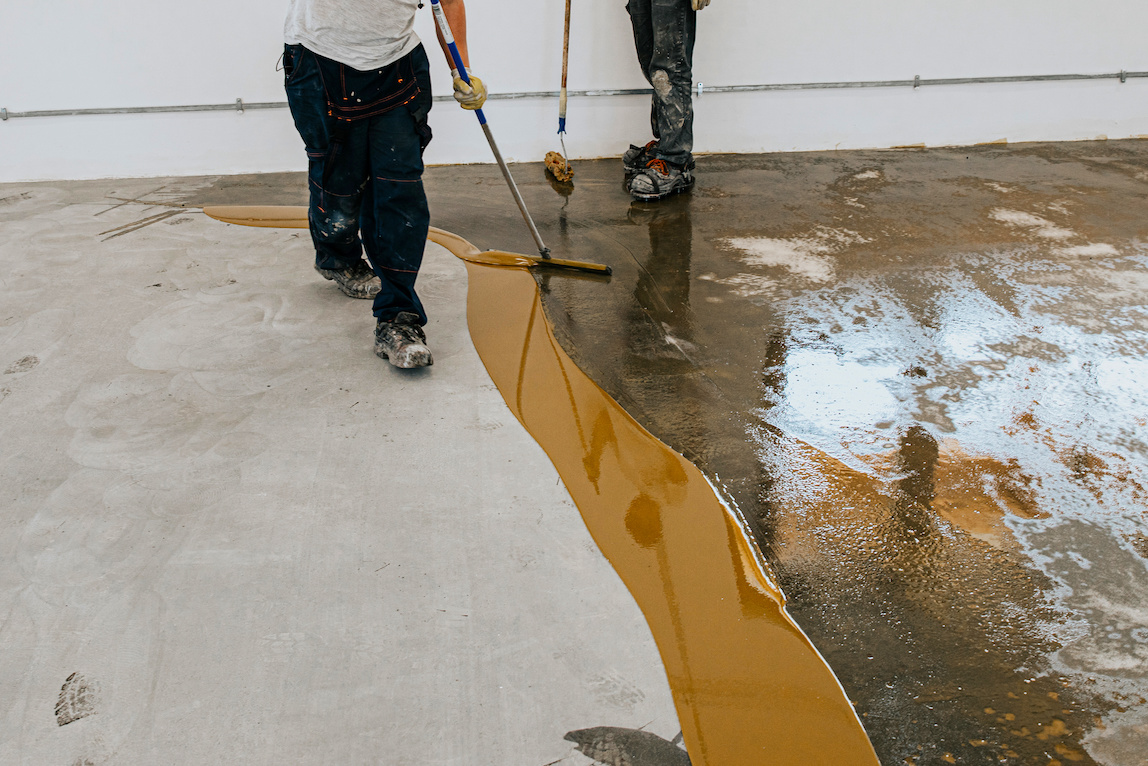
Concrete floors are primarily used outdoors, on the street, in garages, patios, and walkways because they are easy to clean, maintain, and highly durable. But its practical value has been adopted in many other ways. Many warehouses and art galleries have kept concrete floors since they can weather thousands of foot traffic daily without quickly deteriorating.
And in 2018, polished concrete floors dominated the home design trend list, with many designers and homeowners employing concrete for their indoor floor design.
Something with concrete’s industrial relaxed vibe attracts many to it. It’s also cheap, versatile, and would last for many years, probably longer than your home.
Concrete is pretty low maintenance, but since it absorbs and stores heat, called ‘thermal mass’, too much exposure to high temperature may slowly deteriorate its condition. That’s why it’s essential to keep your home’s temperature at optimal levels. Some experts can help you with heating and cooling on your concrete floors.
To help you in cleaning and maintaining your concrete floors, here are a few tips to guide you:
Remove Dirt And Debris First
It’s essential to always sweep or vacuum the concrete floor before scrubbing it with a cleaning solution. Removing the dirt and debris will ensure that you won’t scratch the surface of your concrete floor, especially if it’s the polished type. There are many types and finishes of concrete floors, not just the plain grey you are accustomed to. To know more about the many kinds of concrete floor finishes, click here.
Use A Mixture Of Warm Water And Dish Soap
A simple cleaning solution made of warm water and dish soap will clean your concrete floor efficiently. Use a cloth or microfiber mop to go through the surface, allowing the suds to settle for a few minutes before you pass through it again with a clean, wet mop.
Let It Dry Completely.
Allow your concrete floor to air dry completely before allowing foot traffic to pass through it or before putting back the rug. When you don’t wait for the floor to dry, dirt and dust will accumulate much faster on the surface, and all your efforts in cleaning the floor will go to waste.
Remove Grease Stains Right Away
To avoid ugly marks on your concrete floor, grease stains must be removed as soon as you see them. Sprinkle the area with cornstarch or dry kitty litter and let it sit until it absorbs all the oil before you vacuum and wipe it clean. If the grease stain is persistent, you may need to repeat the process.
Remove Tire Marks With A Degreaser
The concrete floor in your garage deserves some love and care as well. More often than not, tire marks would be left on the floor, but an easy fix is to use a degreaser over the stains. Leave the degreaser for a few hours before scrubbing it with a stiff brush. Afterwards, rinse it well with warm water.
Use Distilled Vinegar For Moderate Rust Stains
The concrete floor on your tool shed might have rust from nails and tools you left on the floor. It would be best to pour distilled white vinegar for moderate rust stains, then leave it for thirty minutes before rinsing it.
Apply Rust Remover With Oxalic Acid For Severe Rust Stains
A commercial rust remover containing oxalic acid would be best to remove large, dark rust stains.
Apply A Protective Coating Every 3-9 Months
To preserve your concrete floor’s industrial appearance and help it resist stain and damage, you need to apply a protective coating at least every 3-9 months.
Remove Mildew Stains With Laundry Detergent.
Mildew is a type of fungus that forms because of poor moisture control in an area. To effectively remove it, prepare a solution of powdered laundry detergent, trisodium phosphate, and water. Scrub and rinse well. For heavy mildew stains, use chlorine bleach and water instead. Use protective gear like gloves to prevent unfavourable reactions to your skin.
Avoid Acidic Cleaners For Painted Concrete Floors
Using harsh, acidic cleaners may damage the finish of painted concrete floors, so stick to dish soap better since it’s a neutral cleaner.
Conclusion
Concrete floor is an excellent alternative to many expensive floor materials. And, contrary to popular belief that concrete is grey, dull, and cold, that’s not the case anymore as different concrete finishes have made their way in many homes and buildings. Concrete may be polished, stained, stamped, and dyed to your preference and to fit your design aesthetic.




 POSTED BY
POSTED BY 

